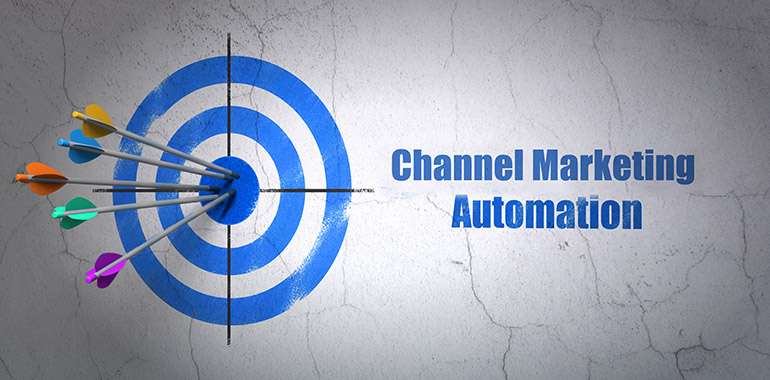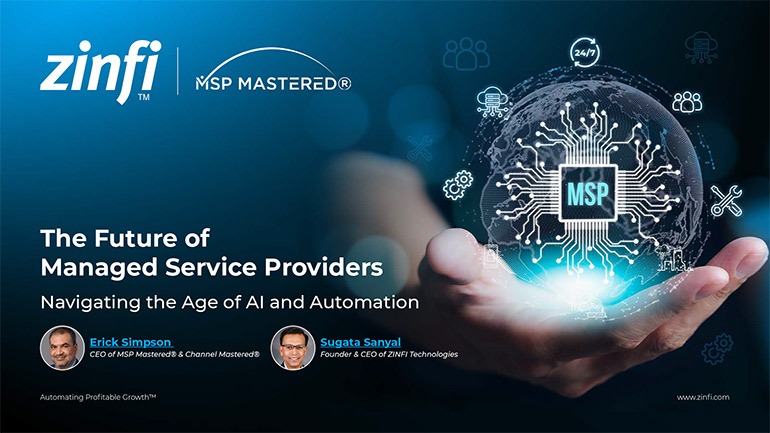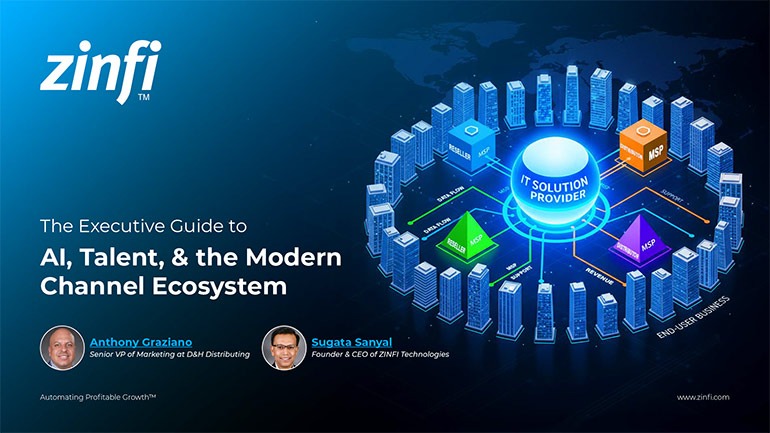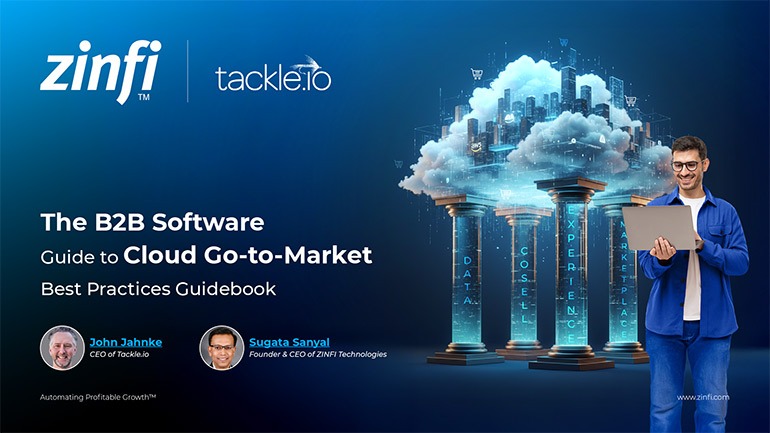Best Practices Articles

Five Core Areas for Deploying Channel Marketing Automation
What is channel marketing automation? It’s about automating core channel marketing process steps that allow vendors to recruit, onboard, train, enable and manage their partner network or channel network on a worldwide basis. “Partner” refers to resellers, systems integrators, value-added resellers (VARs) and others in the technology or manufacturing channel, or dealers, agents and other types of partners in other industry segments. With the advent of SaaS-based automation software, it is now quite easy to deploy worldwide channel marketing automation in a step-by-step manner. However, to be successful in this effort companies need to think through the core areas they want to focus on first, and then deploy the channel marketing automation tools sequentially.
The most logical way to begin is to align the automation needs with the business needs of the organization. But before we talk about that alignment, let’s take a step back and take a look at the overall partner lifecycle management, which is independent of channel maturity, but highly dependent on the company’s ability to drive sales through a channel network. Partner lifecycle management has five basic steps: partner recruitment, partner onboarding, partner training, partner enablement (marketing and sales) and partner management. Let’s go through these areas step-by-step and see how channel marketing automation can help in each area.
- Partner recruitment. With partner recruitment, it’s essential to think about the process—whether you are recruiting resellers, agents or dealers who are reselling or distributing products from a vendor—as something similar to the process of acquiring new customers. In today’s digital marketing environment, recruitment needs to happen using both inbound and outbound marketing techniques. Therefore, channel marketing automation needs to address the core process steps related to search, social media and other online digital marketing, including email and events.
- Partner onboarding. Once partners have been recruited, they need to go through a set of core steps, a process that also requires automation. Channel marketing automation software should be able guide partners through these steps. The first step in partner onboarding is signing onto business contracts. The partner must agree to the terms and conditions related to the channel program. The next step focuses on putting together business plans so the partner can communicate to the vendor how they will sell, market and support the vendor’s product or solution. The third onboarding step consists of partner training, and the final step relates to incentives, so that when partners are fully trained in the sales, marketing and technical areas, they can learn about the channel marketing incentives that are available, such as market development funds, rewards and rebates.
- Partner training. Almost every vendor today involved in B2C or B2B marketing provides enormous amounts of material that channel partners need to go through to learn how to market, sell and provide support for the products and services they are selling. A channel marketing automation platform should be able to provide a complete learning management system with both training and certification management modules integrated into the system.
- Partner enablement. There are two core dimensions here that channel marketing automation needs to address: 1) marketing—driving demand and creating brand awareness, and 2) selling—following up on leads and closing them. Whether we are talking about in-store sales in the B2C environment or face-to-face closing in B2B sales, partners need enablement tools in both their marketing and their sales efforts in order to consistently drive demand and close sales. The right channel marketing automation platform can have a significant impact on these efforts.
- Partner management. This is probably the most important area of channel marketing automation. When we refer to partner management what we really mean is partner performance Managing partner performance is very similar to the way you would manage the performance of an employee. Certain metrics need to be in place, and they should be tied directly to the goals and objectives specified in the business plan so that performance can be measured in a meaningful and objective way. In addition, the vendor needs to not only provide incentives like rewards and rebates, but also automate them to streamline both internal and external engagements and activities.
Once you have identified and understood these five key areas related to channel marketing automation, the next step is to think about how you want to deploy automation in your organization. There are a couple of key factors to consider. First, you need to recognize that your partner tier management will likely vary across different geographies and across the different verticals that you serve. For example, you may have specialty VARs for supporting healthcare, retail, finance, insurance or real estate. Your tier management will probably be very different from one region to another, because these verticals vary considerably by region. So it’s important to carefully think through how your channel tier varies, and therefore how your channel management approach will vary, in different regions around the world. This will have a big influence on the sequence you choose for channel marketing automation deployment. We’ve written about this specific topic (why channel management automation varies by global region) before, and it’s definitely worthwhile to take into consideration before you undertake a global deployment.
Another important factor to think about as you decide on sequencing your channel marketing automation deployment is the overall maturity of your channel program. If you don’t have a structured partner recruitment program already in place, it may not make sense to move up automation into partner recruitment and onboarding. On the other hand, if you do have training but don’t have a structured certification program in place that relates to partner performance management, it may make sense to start with what you have, automate it and make it work before you start defining additional process steps such as recruitment, onboarding, management or different pieces of enablement. Generally, the best place to start is with what you have today—what is working today—and focus on making it more efficient. This approach creates less inertia in the organization as it undergoes the sometimes-difficult process of adopting new technology and a new platform. It also gives you clear visibility and metrics about an area you know well, ultimately creating the foundation for defining process steps that are actually missing or not clearly defined, and then automating them in a sequential order that makes sense. My point is that it’s essential to think this through in a structured way to achieve success in channel marketing automation.
If we step back and look once more at the core areas for deploying channel marketing automation, we should begin to recognize the importance of understanding unified partner management and deploying automation in stages. Rome wasn’t built in a day. It doesn’t make much sense to try to automate the channel marketing process end-to-end all at once. Instead, adopting a one-to-three year vision of your automation project will give you time to take a careful, structured approach and make it a reality for your organization. Keep in mind that size matters—the smaller the organization, the faster you can automate and the more control you can exert over the process. The more revenue that’s flowing through the channel, the more likely that multiple business units and product lines are involved, as well as multiple functions across different geographies—all adding to the complexity of deployment and slowing things down. That’s why it makes sense to pick pieces to automate, especially in larger organizations. Automating everything end-to-end makes much more sense for smaller organizations, but even then the deployment is likely to work best in carefully considered stages.
Finally, once you have carried out your automation strategy that may last one to three years, don’t neglect to reassess your progress and the alignment of your automation strategy with your business needs on an annual basis. This step ensures that the channel marketing automation becomes a means to an end rather than an end in itself. Aligning channel policies, programs and the channel marketing automation platform on a continuous basis will not only give you results, but also enhanced visibility and control, which are essential in a highly chaotic channel management environment.
Best Practices Guides
 First Principles Drive Modern Partner Ecosystem Success Best Practices
First Principles Drive Modern Partner Ecosystem Success Best PracticesDownload for FREE
 The Future of Managed Service Providers: Navigating the Age of AI and Automation
The Future of Managed Service Providers: Navigating the Age of AI and AutomationDownload for FREE
 Modernizing Channel Marketing: AI and Ecosystem Enablement Best Practices
Modernizing Channel Marketing: AI and Ecosystem Enablement Best PracticesDownload for FREE
 The Channel’s Shift to Partner-Led With AI Best Practices
The Channel’s Shift to Partner-Led With AI Best PracticesDownload for FREE
 Hyperscalers, ISVs, and AI: Shaping the Future of B2B Software Distribution
Hyperscalers, ISVs, and AI: Shaping the Future of B2B Software DistributionDownload for FREE
 Definitive Guide to a Partner Ecosystem-First Sales Strategy
Definitive Guide to a Partner Ecosystem-First Sales StrategyDownload for FREE
 The Partner-Led Digital and AI Transformation Best Practices
The Partner-Led Digital and AI Transformation Best PracticesDownload for FREE
 Startup Talent Recruitment: Hiring Missionaries, Not Mercenaries
Startup Talent Recruitment: Hiring Missionaries, Not MercenariesDownload for FREE
 The Future of Partner Relationship Management with AI in Partnerships
The Future of Partner Relationship Management with AI in PartnershipsDownload for FREE
 Cybersecurity for the 99%: Strategies from the Frontline
Cybersecurity for the 99%: Strategies from the FrontlineDownload for FREE
 Mastering Partner Relationships: A Strategic Approach to Business Growth
Mastering Partner Relationships: A Strategic Approach to Business GrowthDownload for FREE
 Mastering Partner Relationship Management: Keys to SaaS Channel Success
Mastering Partner Relationship Management: Keys to SaaS Channel SuccessDownload for FREE